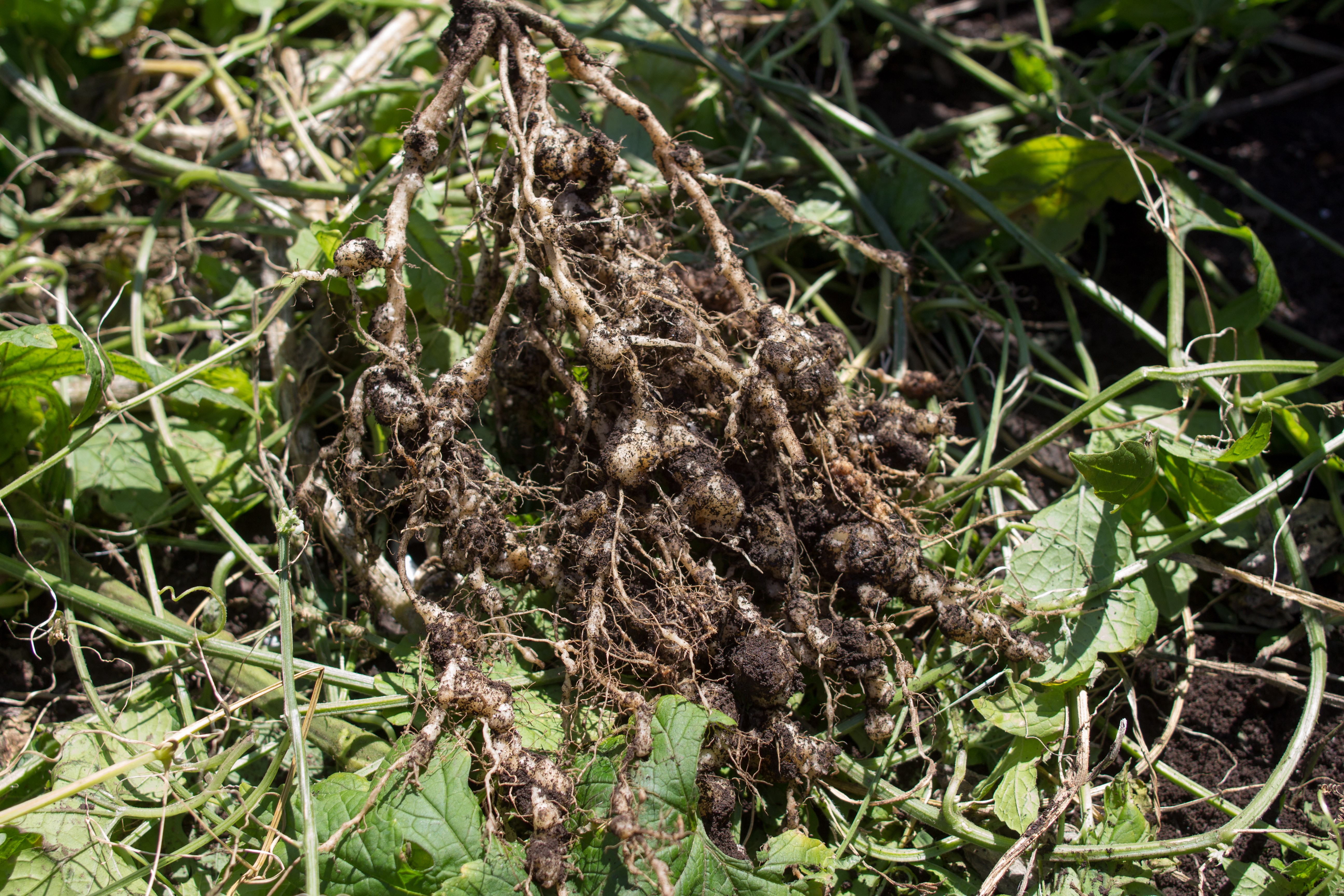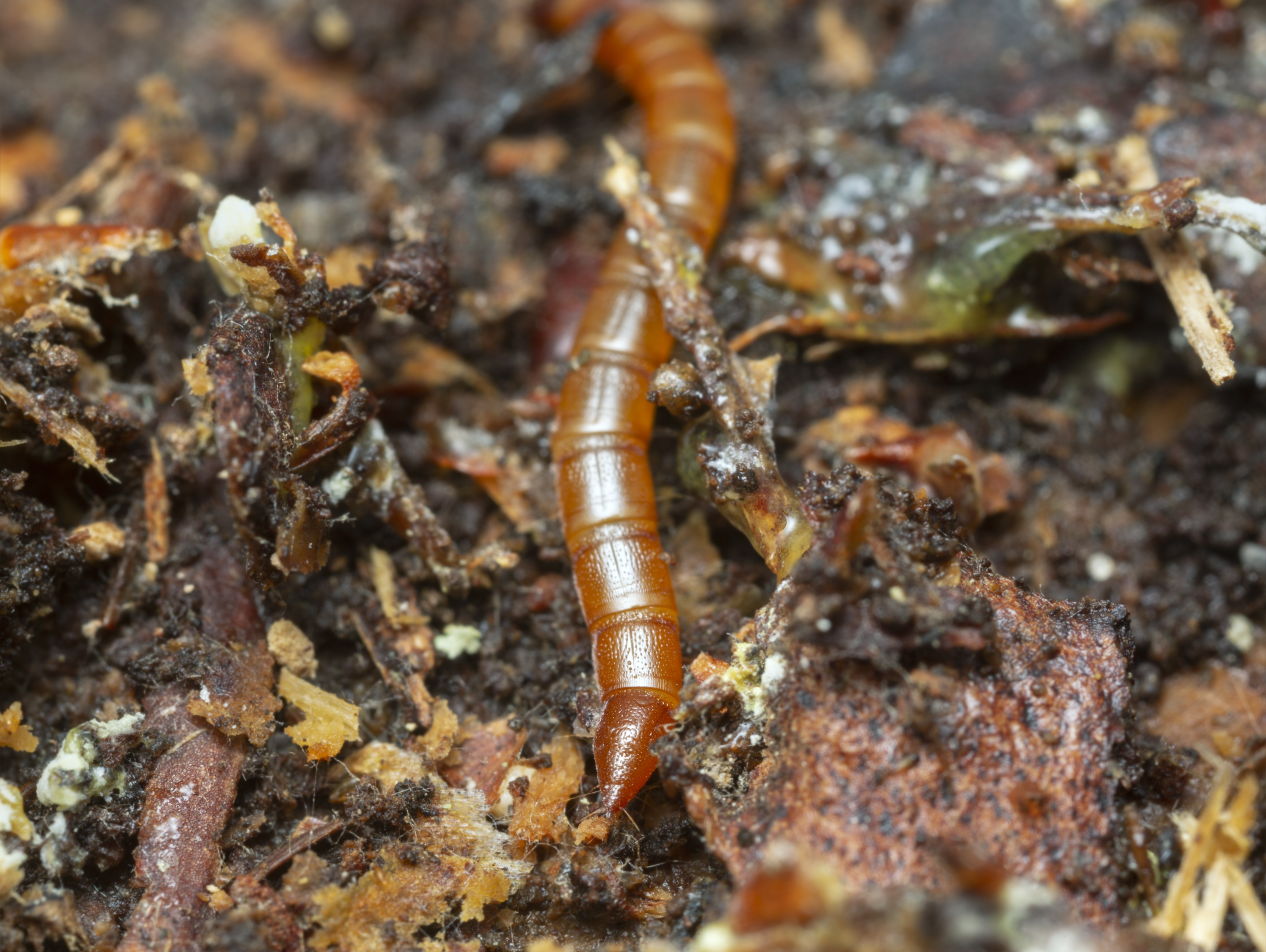Taking soil samples

How to take samples for pest and disease tests
Although testing for pests and diseases is becoming more sophisticated, the results are only valid if the samples have been taken in a systematic way with the right tools. A shovel of soil taken from the gateway is not best practice for any test.
Sampling procedures are available below, for a wide range of tests carried out in the Crop Clinic. You can also visit our Soil health testing page for ordering a kit for certain tests.
Sampling soils for clubroot
Time of sampling
Fields in which brassicas are to be sown or planted may be sampled at any time of the year, but samples are most conveniently taken when the soil is soft and any growing crop is small. As the test takes 6 weeks after setting up, fields must be sampled well in advance of sowing.
Sampling area
Five hectares agricultural brassicas (e.g. oilseed rape); 2 hectares or individual breaks for horticultural brassicas (e.g. calabrese).
Draw a map of the field and, if necessary, split it into 5 hectare blocks using features such as gates and trees as reference points. Sample each 5 hectare block separately. Gateways and wet hollows should be sampled separately as these areas are most likely to be heavily contaminated and could give a false clubroot rating to the main sampling area.
Sample size and pattern
Fifty cores should be taken from each sampling area to give a soil sample of 4.5 lb (2 Kg). The cores should be collected at regular intervals as the sampling areas is traversed in a “W” or multi “W” pattern.
Sampling tools and sampling depth
A narrow bladed fern trowel or auger should be used and the cores should be taken to a depth of 6-8” (15-20 cm). An auger will be essential where the soil is compacted. Remove excess soil from the sampling tools between different sampling sites.
All samples should be collected in heavy gauge polythene bags. Each bag should be tied as soon a it has been filled to prevent contamination. Label each bag separately giving the name of the farm and field or part-field.
Remember the validity of the clubroot test is determined primarily by the sampling procedure in the field.

Free-living nematode sampling (Spraing test)
Best results are obtained by sampling soils from October until March (inclusive).
Subdivide fields into units no greater than 10 acres (4 ha); subdivision may also be necessary to take account of differences in soil type and previous cropping history.
Submit a field plan to show any sub divisions. Using a narrow -bladed fern trowel or “cheesecorer”, take samples at least 1” (2.5 cm) across and 8-10” (20-25 cm) deep, randomly on a “W” configuration; the sampling tool should be driven vertically downwards into the soil to obtain the sample.
Take enough samples to provide about (1 kg) soil. Clean the sampling tool between sampling different fields or parts of fields.
Place soil from each sampling unit into a heavy gauge polythene bag; secure bag with a tie to prevent cross-contamination. Record details relevant to sample on the bag. Some of these nematodes are very fragile; rough handling of soil during sampling and transportation may jeopardise the results of the test.
Potato cyst nematode sampling
Sample fields only where potatoes are not being grown.
Sub divide fields into units no greater than 10 acres (4 ha); subdivision may also be necessary to take account of differences in soil type or previous cropping history, especially in respect of potato varieties.
Submit a field plan to show any subdivisions. Using a “probe corer”, take samples randomly on a “W” configuration; the corer should be driven vertically downwards into the soil to obtain the sample.
Take enough samples to provide about 500g soil. Clean the coring tool between sampling different fields or parts of fields. Where seed potato land is being sampled prior to a Scottish Government statutory test, concentrate sampling on areas around gateways, gardens, field depressions, old potato clamps and groundkeepers or self set potatoes to increase the chances of detecting small infestations.
Place soil from each sampling unit into a heavy gauge polythene bag; secure bag with tie to prevent cross contamination. Record details relevant to sample in and on the bag. Note: Do not place written details on paper with wet soil.

Soil pests sampling
Sampling methods for leatherjackets, wireworms, wheat bulb fly and cabbage root fly are described here.
Leatherjackets
In grassland, take 25 soil cores each of 2.5” (6.5 cm) diameter along the longest diagonal of the field. Using the special sampling tool, drive each section of pipe into the soil to a depth of about 2.5” (6.5 cm), i.e. up to - but not beyond- the leading edge of the holder on the sampling tool. Retain the soil samples grass uppermost within the pipes for transfer to the laboratory. Avoid long delays between sampling and return of the material to the laboratory - grubs are likely to escape! Where a slight delay is unavoidable, store samples at low temperature, e.g. in a fridge or cold room but never in a deep freeze.
Wireworms
In grassland, take 20 soil cores each 4” (10 cm) diameter and 6-9” (15-23 cm) deep per field; take 2 cores at random from each one-tenth of the field. Bag and number cores, preferably separately, for transport to the laboratory.
Wheat bulb fly eggs
Use the special shovel provided for sampling the soil in potato crops for wheat bulb fly eggs. The height of the sides is 1.25” (3 cm). Soil samples should be taken approximately to this depth and to the distance of the 3” (7.5 cm) mark scribed on the flat surface of the shovel. Take a total of 24 samples along the longest diagonal of the field, 12 from the furrow and 12 from the ridge. Bag ridge and furrow samples separately. The shovel may also be used to sample the soil in crops other than potatoes (e.g. oilseed rape). In these cases, take 24 samples across the longest diagonal.
Cabbage root fly eggs
Using a dessert spoon, carefully remove the soil from around the stems of 20 randomly chosen, cruciferous plants. Remove soil around each stem to a distance of 1” (2.5 cm) and to the same depth. Deposit samples in a bag for transport to the laboratory.
Find out more about our services

SAC Consulting
Our consultants in 25 offices across Scotland and northern England turn research into advice and advantage for business and public sector alike.


Vet & laboratory services
Our leading experts provide support to clients in areas animal disease, diagnosis and surveillance.
